CW84 September, 2023
The seventh free corona vaccination has started
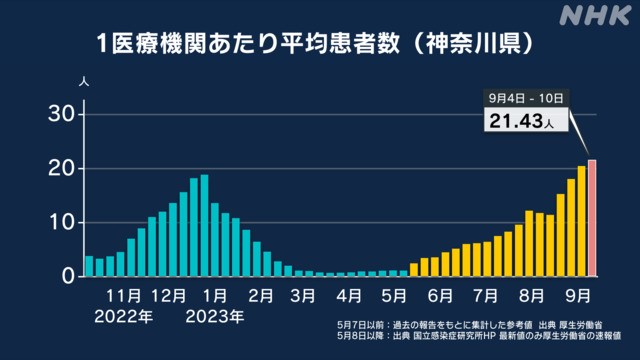
Coronavirus cases have been hitting a new high every week. See the graph above reported by the NHK1). In the week of Sept. 4, the average weekly cases per hospital reached 21.43 in Kanagawa, and 29.3 in Chigasaki2). The figure in the prefecture has surpassed the peak of the eighth wave observed in January3).
1) https://www3.nhk.or.jp/news/special/coronavirus/data/pref/kanagawa.html
2)https://www.pref.kanagawa.jp/sys/eiken/003_center/0005_ryukou/COVID-19/230915_COVID-19_18.html
3) Data before May 7 on the graph were recalculated according to the present style.
Free vaccination for all generations started on September 20 (Wed). Vaccines were developed for Omicron XBB by Pfizer and Moderna. The two vaccines were confirmed to be effective against EG.5 and BA.2.86. EG.5, which is a new variant of Omicron XBB, has become the major strain since late August. BA.2.86, a new variant of Omicron BA.2, was found recently in Tokyo.
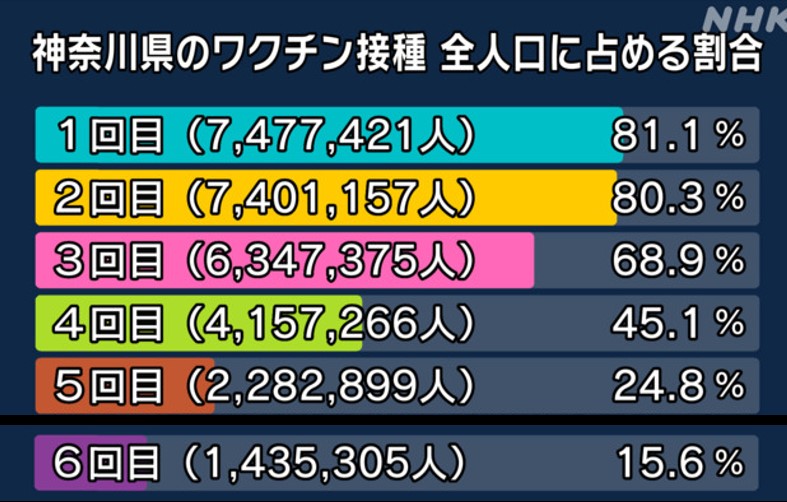
The free vaccination is going to be conducted for six-month-old babies and older until the end of March 2024. As more children have been infected with Omicron variants, the Japan Pediatric Society recommends vaccination to all children from six months old to 17 years old. The percentages in the table above changed little from the previous month. Only 15.6% of Kanagawa residents have received all the six free inoculations. From April 1 onward, once-a-year vaccination in autumn or in winter may be institutionalized for people who are likely to develop a serious condition, including elderly people and those having chronic diseases, probably with a charge.
Autumn is coming
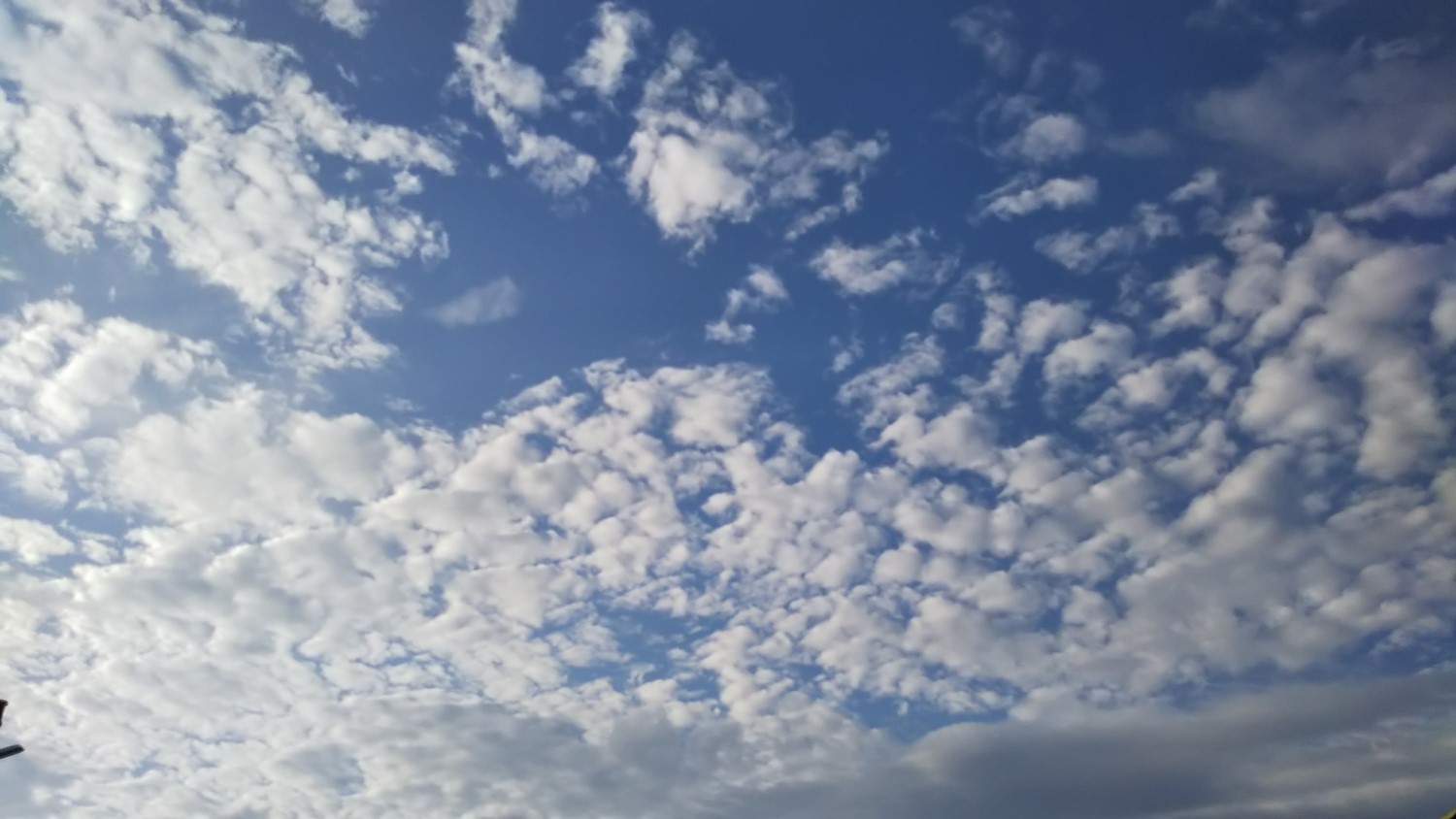
The hot weather is persisting, but the clouds indicate the arrival of autumn. Weather forecasters and local municipalities are saying almost every day that we should refrain from outdoor sports in the afternoon.
The figure below shows the first to sixth five-day averages of maximum temperature of each month observed at Tsujido in Fujisawa, the nearest recording point. This year has been hotter than last year since mid-July. Especially for the one month from early August to early September, this summer was more than two degrees Celsius higher than last year.
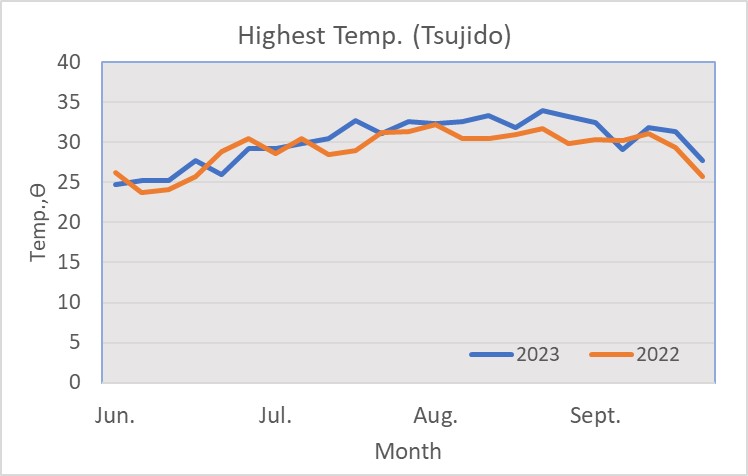
Not only in Japan, but in the US, Europe, the Mideast, and other Asian areas, temperatures are unusually high this summer. Two major reasons of high temperatures in Japan are the meander of the westerlies and active tropical cyclones, according to an expert. However, the root cause is surely the global warming by greenhouse gasses. Let’s reduce CO2 emissions for future generations.
Temperature source: https://www.data.jma.go.jp/obd/stats/etrn/view/mb5daily_a1.php?prec_no=46&block_no=1443&year=2023&month=&day=&view=p1
Flowers of the season: Cosmos
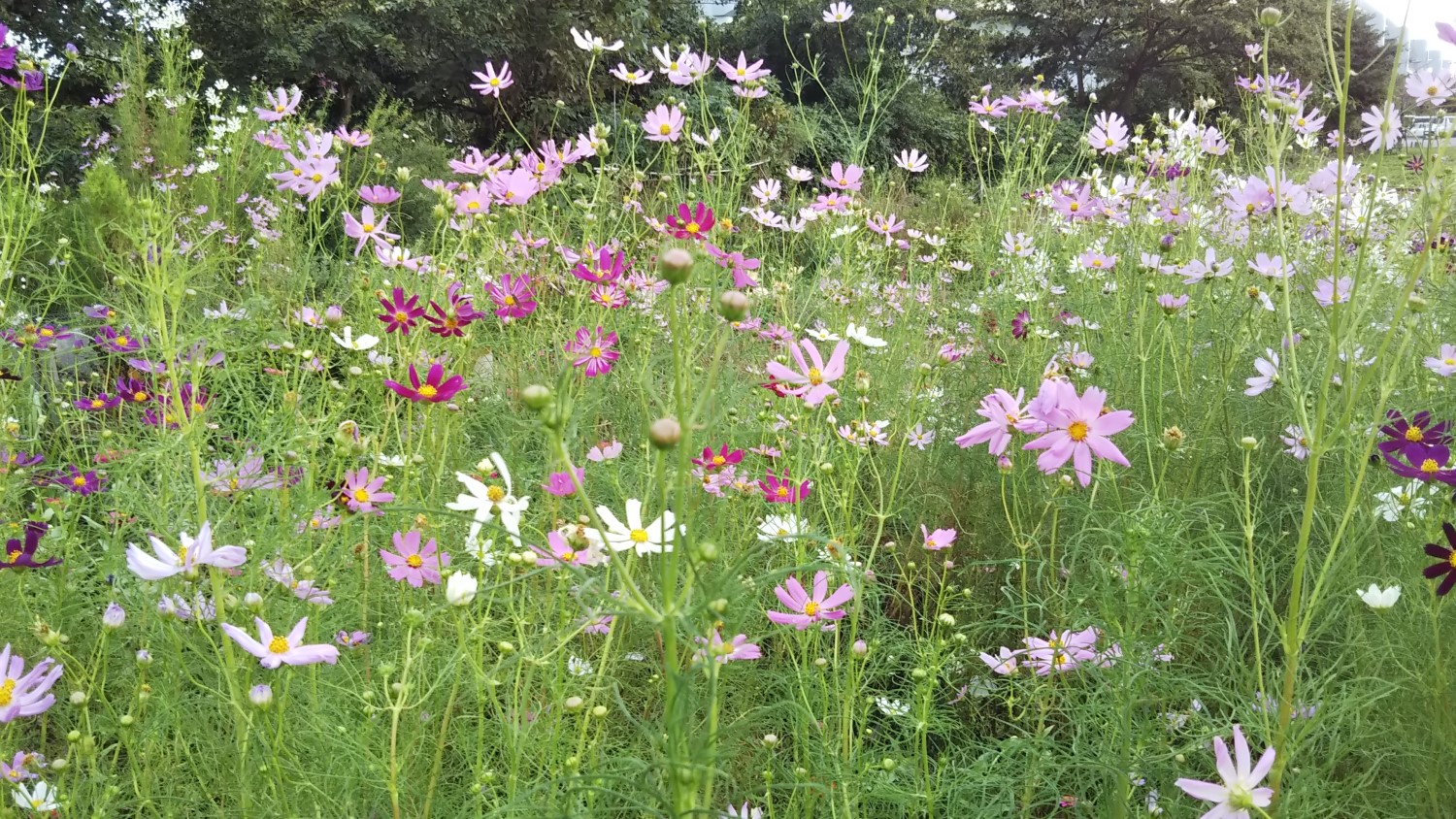
Colorful cosmos flowers under a clear blue sky are attractive autumnal scenes for Japanese people. Cosmos flower fields spreading over idle farmlands, riversides and ski areas have become tourist resources. The composite annual grass is a short-day plant. Its seeds are commonly planted in summer and flowers bloom in pink, white, red and more in autumn. Recently, yellow-colored and chocolate-colored flowers have been bred. The latter emits sweet smell of cacao. The place of origin is pine and oak forests located between 1,800 and 2,450 meters above sea level in Central Mexico. Cosmos was introduced into Japan from Italy by a teacher of an art school in 1879.
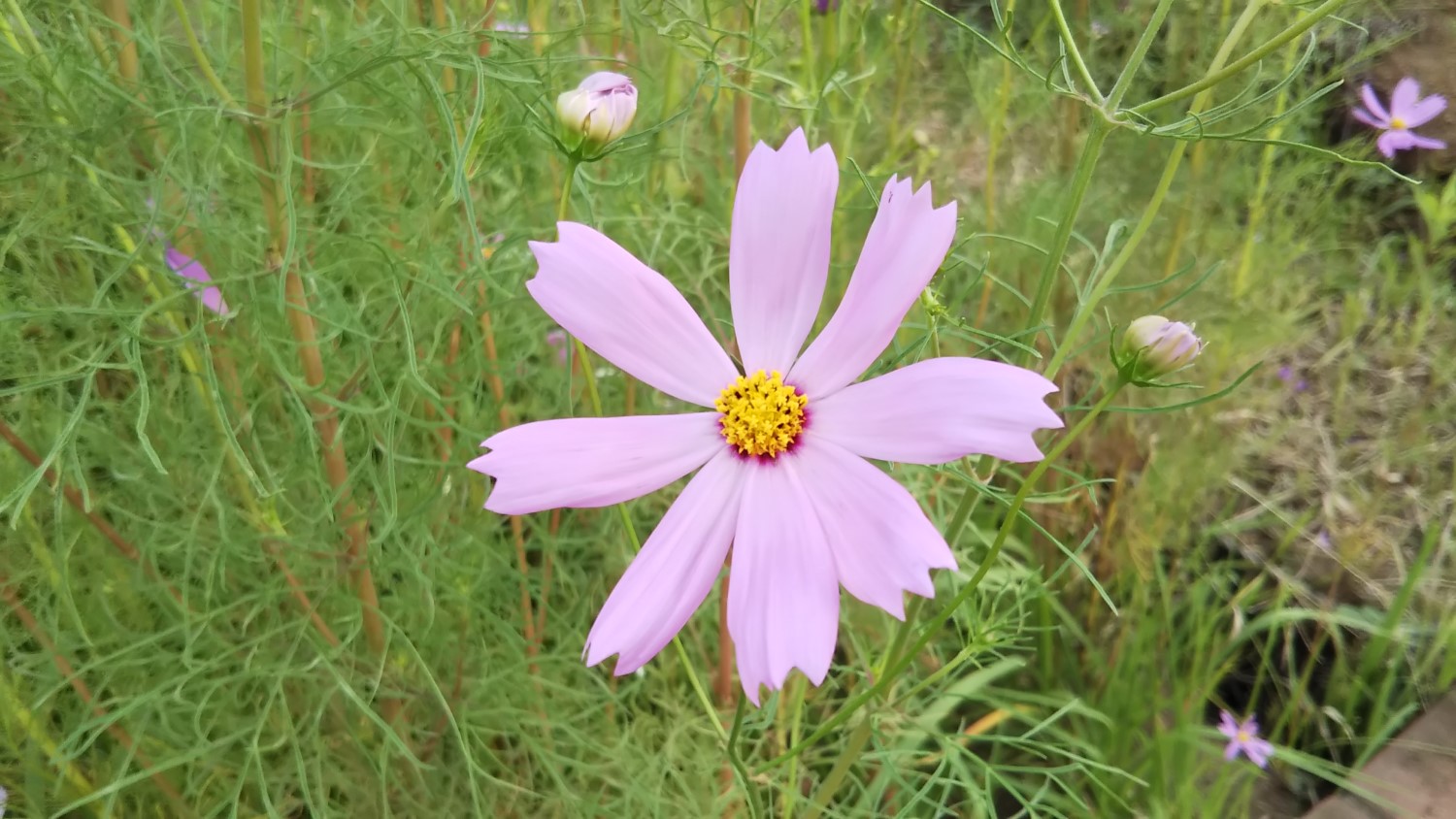
The name of the ray flower is said to be derived from the Greek word ‘kosmos’. A Spanish clergyman in Mexico saw the yellow disk and surrounding eight petals being well balanced, he named the plant cosmos. See the photo above.
The stems grow up to two meters high and have many branches. Pinnate leaves are opposite, and small leaves look like threads. Cosmos is fond of places with a lot of sunshine and good drainage, and it grows even in poor soil so we often see the plant on riverbanks and roadsides.
Cosmos is loved by Japanese people and is called ‘autumnal cherry’ because of its fine and thin image. However, the plant is persistent. If the plant falls down in a heavy wind, roots appear from the stem and the plant rises again to bloom flowers. That nature probably touches our mind so that cosmos has been often expressed in popular songs and poems.
History of Chigasaki: Kowada Village (2)
The name of 尾根明神, or O-ne myojin, is carved on the stone monument standing on the left of the worship hall of Kumano Shrine. The Deity is described as 浜鎮守尾根大明神, or Hamachinju O-ne Daimyojin, in the above-mentioned ancient note recorded in 1798 (CW 83), but in 新編相模国風土記稿 (the new edition of Sagami province topography), it is described that the enshrined deity is unclear. O-ne Myojin had been located in 8-chome Deguchi-machi, but it was moved to the present place in the Meiji era. In an article of 皇国地誌 (the topography by the Meiji government), the shrine had been on the Ubajima, but it was repeatedly knocked over by the winds and waves, and was moved to 津戸田, or Tsutoda in Hishinuma 3-chome. However, the article confuses O-ne myojin with Ubagami.
Shrines and temples enshrined in the village were Gozu tennosha, Sannousha, Kotoku Temple, Senjuin Temple (Shingon sect) as well as Jyoshoji Temple (Jyodo shinshu sect), and Amidado, according to 風土記稿.
風土記稿 describes that there was a gunnery range on the beach (see the photos below). The place, also called a firing range, was a coastal dune where the Edo shogunate practiced shooting. The large range spread from Katase, Kugenuma and Tsujido Villages in Fujisawa to Kowada and Chigasaki Villages. Guns in those days were classified into four categories based on the weight of the bullet. They were the small arms, medium arms, guns, and the ancient type of cannon. Long-range shooting was called 町打, or cho-uchi, short-range shooting was 角打, or kaku-uchi, shooting on a ship was 船打, or funauchi, shooting at a low target was下ヶ矢, or sageya. The practice of cho-uchi was conducted from the west bank of the Katase River in Katase Village towards Yanagishima.
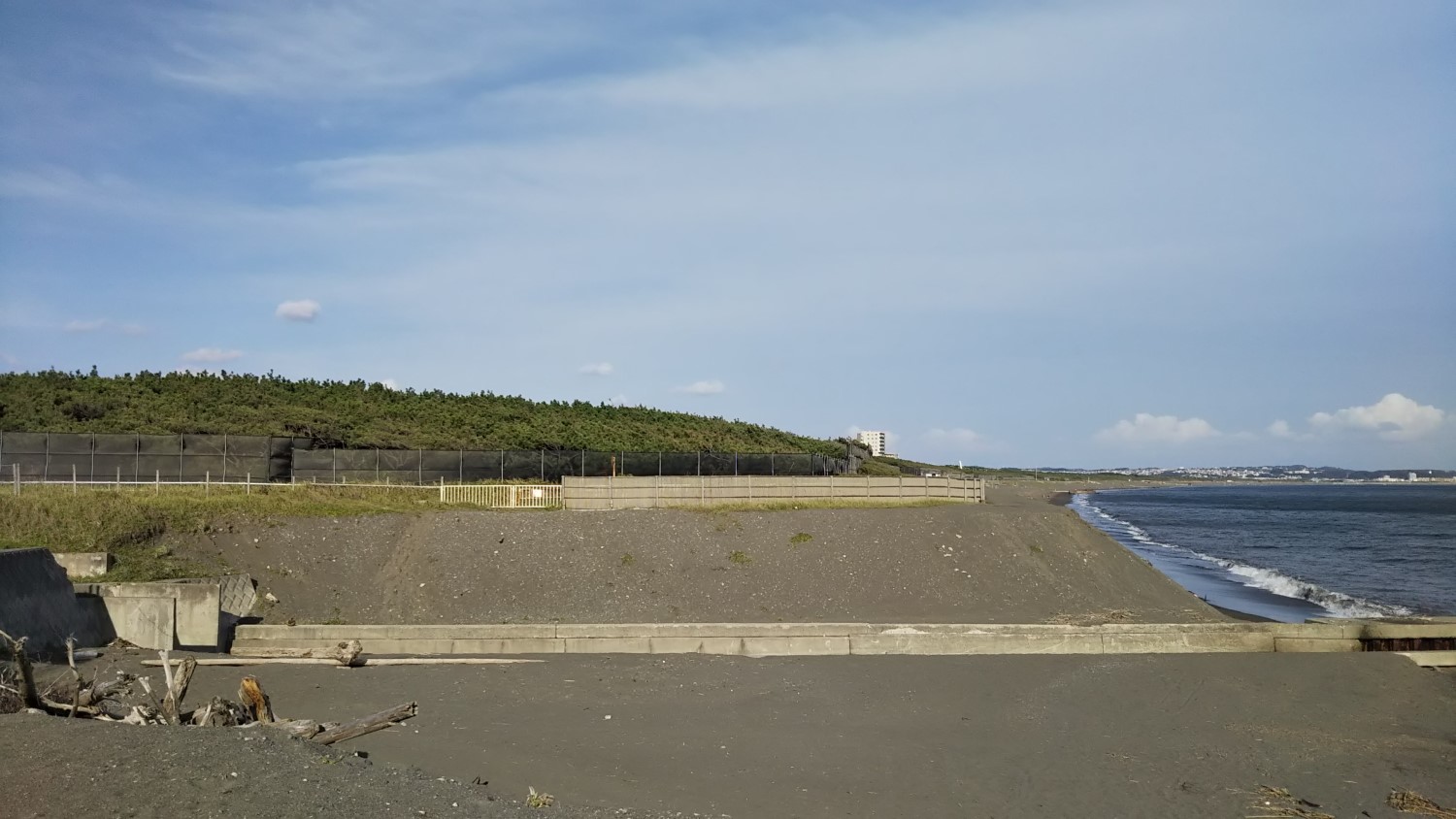
It was in 1728 when the firing range was set in place. According to The History of Chigasaki, drills were carried out annually for the next 21 years, then every two years, and then irregularly in the late Edo period. In the Meiji era (1868-1912), the Tsujido and Kowada beaches were used as shooting drills by the Yokosuka Marines, and the drills had frequently been conducted until the beginning of the Pacific War (1941-1945). After the war, the US Navy drilled there.
(Shooting range) It probably spread over the Kowada and Tsujido beaches (the photo above) and inland R134 and a pine windbreak (the photo below)
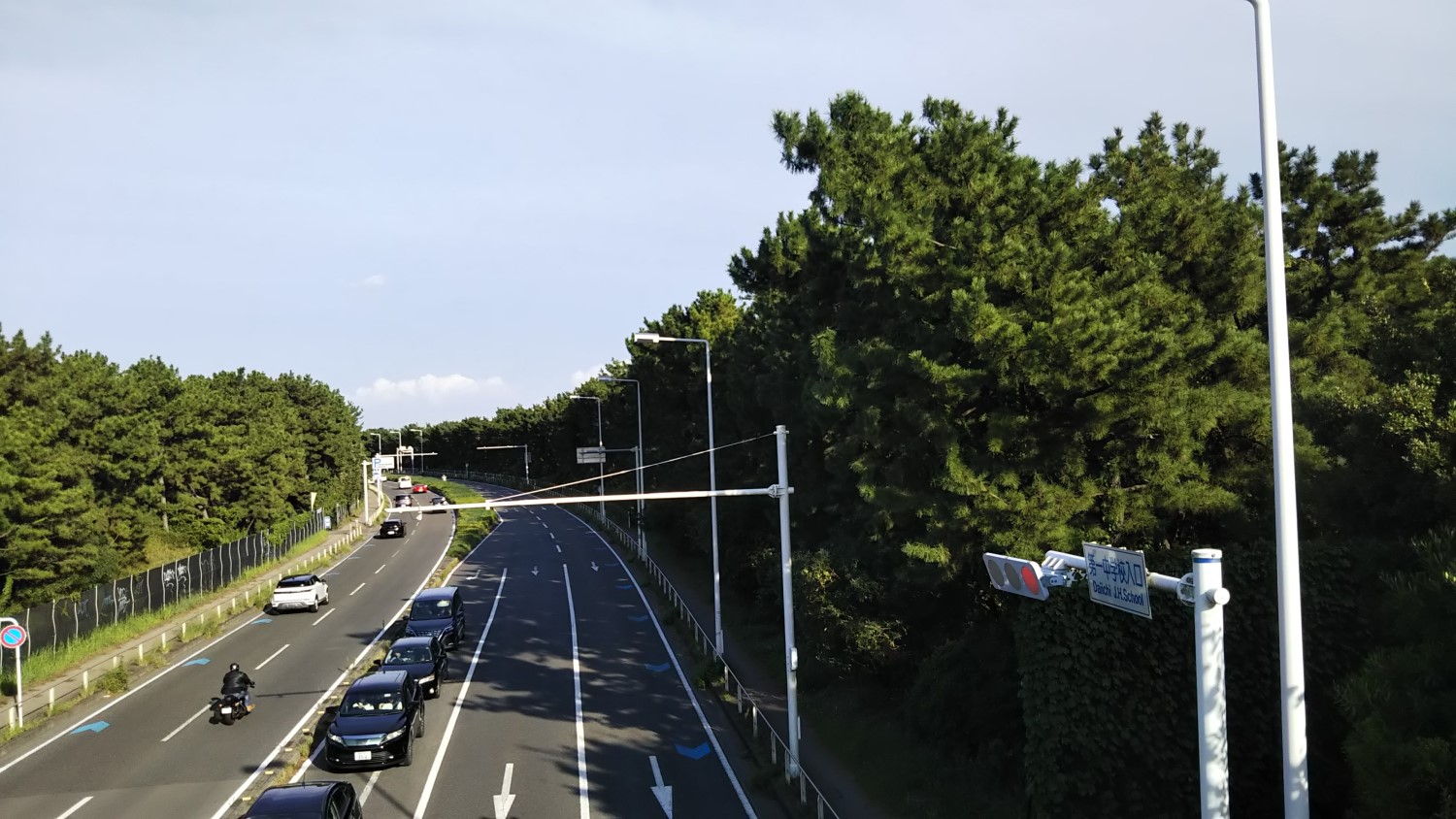
Interested in Japanese proverbs?
1)雨だれ石を穿つ (AMADARE ISHI WO UGATSU)
AMADARE means a raindrop, ISHI a stone, WO a word placed after an object, and UGATSU to wear way.
Even small water drops like raindrops wear away a stone, if they constantly drop on it. Likewise, you can achieve your targets and lead a happy life as long as you do your best steadily. The proverb is quite educational so that many people make this proverb their motto. However, the proverb was originally a warning. It meant that if even minor offenses are repeated, accumulated punishment will come back to the perpetrator. Constant good or evil deeds bring significant consequences.
The proverb is in a story written by a Baijo, a Chinese man in the second century BC.
Its English equivalents are:
●Little drops of rain pierce the hard marble.
●Constant dripping wears the stone.
●Nothing is impossible to a willing mind.
2)一寸の光陰軽んずべからず (ISSUN NO KOIN KARONZU BEKARAZU)
ISSUN means a moment, NO of, KOIN time, KARONZU to think light of, and BEKARAZU you should not. *KOIN: the sun and moon
As time passes very rapidly, we should study hard without wasting even a short time. Japanese people are very familiar with the poem, as they learned the proverb in Chinese lessons at their junior high schools. However, it is one thing to learn the poem, but it is quite another to live as the poem teaches. Were it not for smartphones, more time would be spent in study.
The proverb is in the Chinese poem 偶成, or Impromptu, written by Chu His (1130~1200), a Chinese scholar, and the founder of Neo-Confucianism.
Its English equivalents are:
●If you lose your time, you cannot get money.
●Take time when time comes, lest time steals away.
●Time lost cannot be won again.
Short Essays on Chigasaki-5 Toyotomi Hideyoshi’s Kinzei (禁制)(The Middle Ages) (Bimonthly serial)
Toyotomi Hideyoshi, aiming to achieve the unification of the country, conquered Kyushu in 1587. Next, he targeted the Kanto and Oshu (the northern part of the mainland) regions. He declared war against the Hojo clan in Odawara and started to attack them in November 1589.
When he demanded submission of the Hojo family, a supreme ruler in the Kanto region, to him, they rejected it. So, he started attacking the Hojo clan’s castles built throughout the Kanto region in January 1590. He dispatched his large army of 220,000 in April, and besieged Odawara Castle, which 56,000 of the Hojo clan held. Furthermore, he deployed a navy at sea, and built a castle overnight at Mount Ishigaki as his headquarters. Finally, the Hojo family surrendered to him on July 5, 1590.
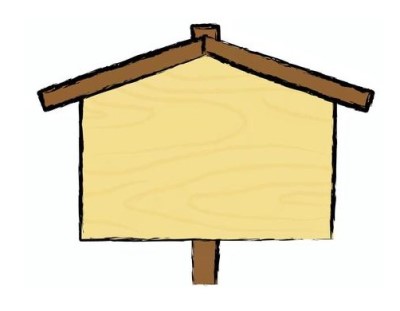
Meanwhile, Hideyoshi issued Kinzei (禁制) *, a writ of prohibition, to his army as well as to villagers and temples in the occupied areas. He gave protection to those who lived in the area by banning his troops from behaving violently, and setting fires. He heavily punished his soldiers who violated the writ. The villages and temples were desperate to buy the writs to keep peace and stability in their domains.
In Chigasaki, three Kinzei were found: in Tsutsumi, Futokorojima (currently, Enzo, Hamanogo and Yabata) and Ryohama. Kinzei meant the end of the Hojo family’s ruling, and indicated the turning point from the Middle Ages to the Early Modern Period in Chigasaki.
(The source of the essay: Chigasaki People’s Book published by Chigasaki City)
* Hideyoshi seemed to do pacification work to avoid conflicts with villages and temples in the new territories by issuing Kinzei. Kinzei was written on a wooden notice board and the board was stood at eye-catching places.
The harvest moon on Sept. 29 (Fri)
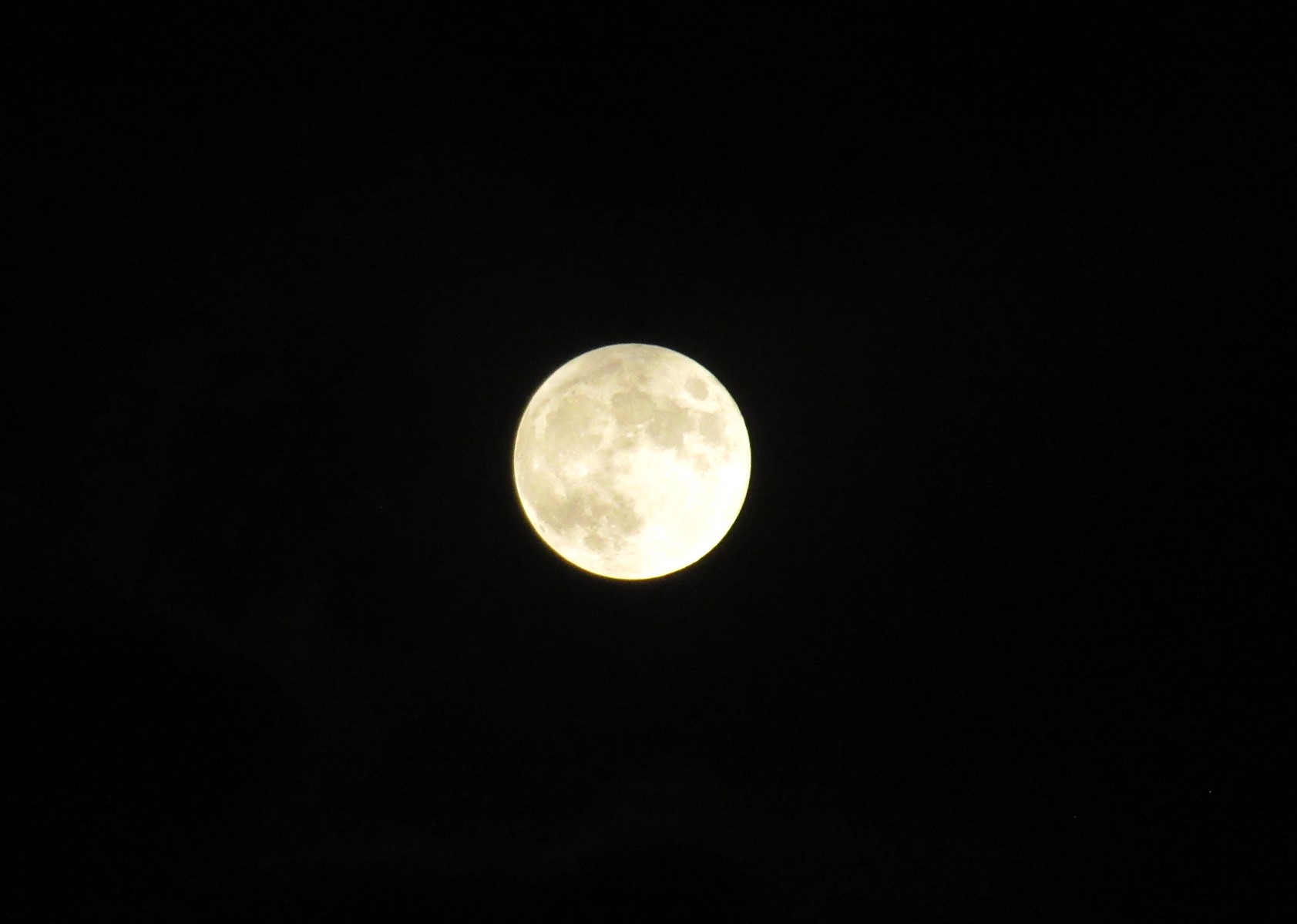
The harvest moon in 2023 was observed on the evening of Sept. 29 (Fri), corresponding to August 15 in the lunar calendar. The harvest moon is designated as the moon appearing on the day of the month in the lunar calendar. The custom to view the moon came from China in the Heian period (794-1185). The harvest moon was a full moon this time.
The phenomenon happens only once in several years. This is because the harvest moon is defined by the date, while a full moon appears when the sun, moon and earth take certain positions. We will see the next full harvest moon in September 2030.
The Japan Aerospace Exploration Agency launched a moon lander on September 7. The probe is going to land on its earth-facing surface in February 2024. We might see the probe’s landing through a telescope?
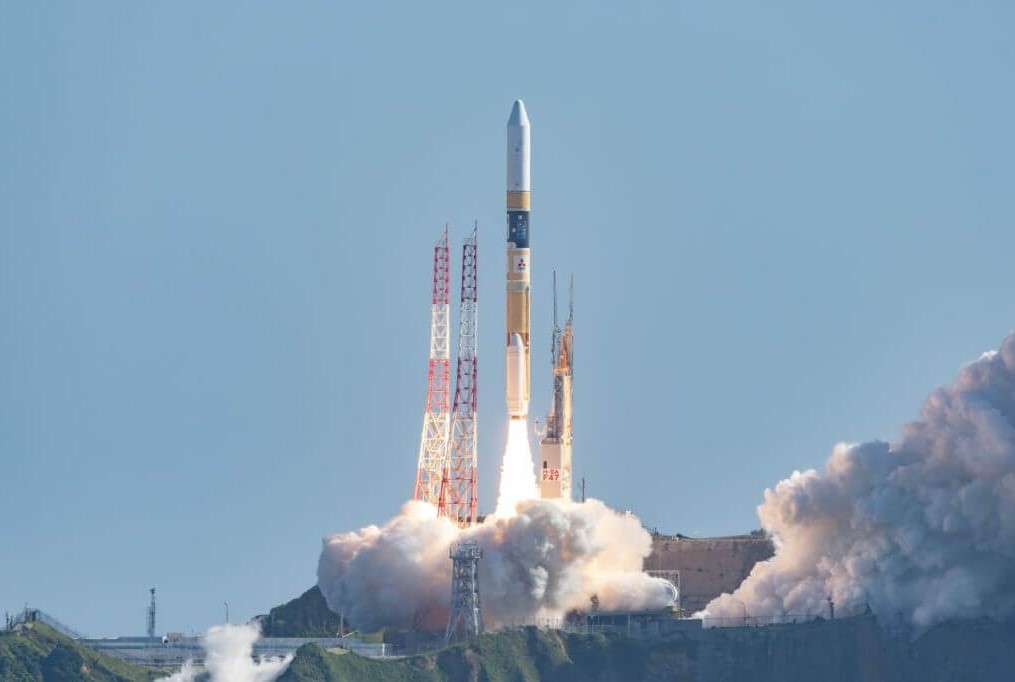
Invitation to Kamakura (31) Lotus Flowers (Bimonthly serial)
Extreme heat has been continuing each and every day. Less rain has been falling around the Kanto region although floods have been caused by heavy rainfall in other areas. This severe weather is unbearable not only for humans but must be intolerable for plants, animals and nature. However, lotus flowers in Kamakura are blooming beautifully resisting such scorching sunlight.
At Tsurugaoka Hachimangu Shrine, lotus flowers on the Gen-Pei Pond are now fully in bloom. It is said that this pond was made by the order of Masako, the legal wife of the first Shogun Yoritomo Minamoto. The right half of the pond, which represents the Genji Family (Minamoto clan), has three islands. In Japanese, ‘three’ also connotes birth – Masako prayed for Genji’s prosperity. On the other hand, the left half, which symbolizes the Heike Family (the deadly foe of the Genji), has four islands. ‘Four’ connotes death – she invoked the destruction of the Heike.
Lotus flowers are regarded as sacred and significant in Buddhist teachings. Ponds in the Western Pure Land presided by Amida Nyorai are filled with blooming lotus flowers. They grow in the mud below the surface of water, but later on bloom beautifully above the surface. The process of their growth symbolizes the stages of our spiritual growth. The mud symbolizes the impurity of our earthly desires, and beautifully blooming lotus flowers signifies our reaching enlightenment.
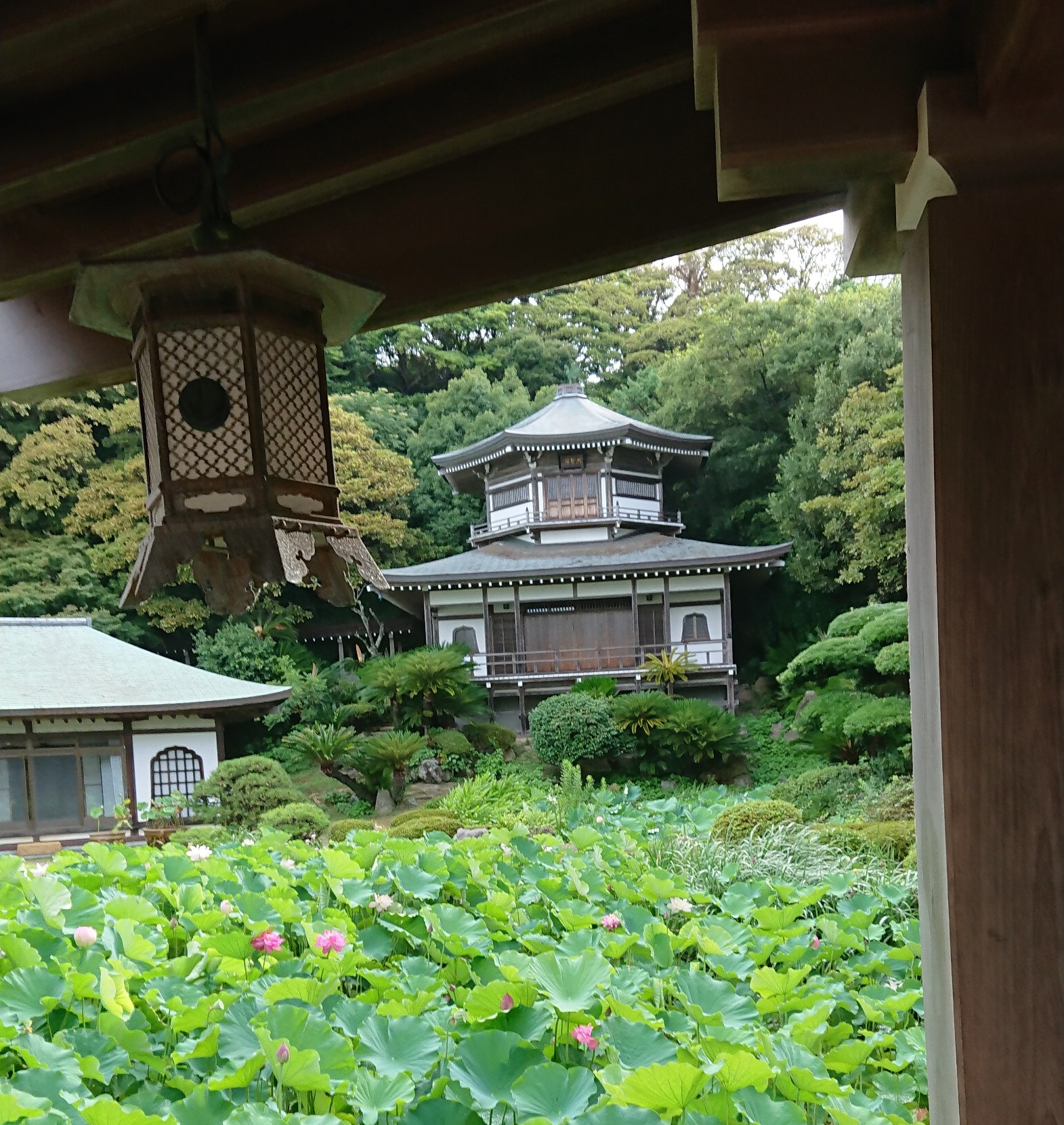
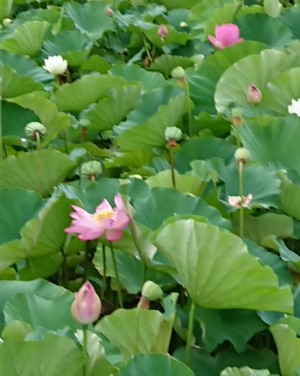
Komyouji Temple was reportedly founded by the fourth regent Tsunetoki Hojo in 1243. It is one of the Head Temples of the Pure Land Sect of Buddhism. Passing through a huge entrance gate, you can see the grave post of the famous Japanese movie star, Ken Takakura. On the other side of the main temple building, there are two Japanese gardens – a pond garden and a dry Zen style garden. These are hidden gardens of Kamakura because they are not tourist attractions. The main hall is an Important Cultural Property. Lotus flowers blooming in profusion are truly a sight to behold.
An exhibition of Yuzo Kayama at Chigasaki People’s Museum
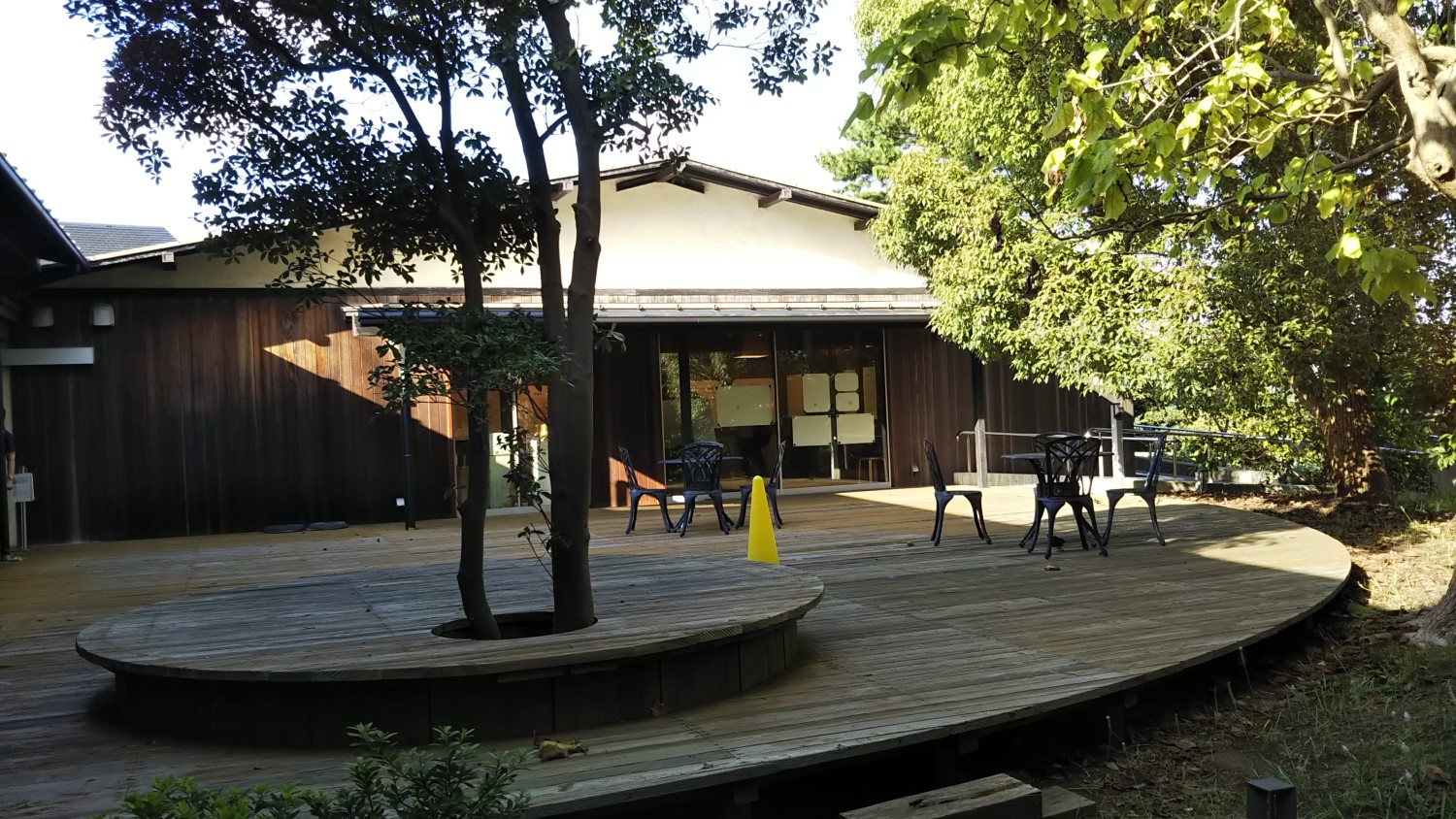
Singer, songwriter and actor Yuzo Kayama (his real name is Naoaki Ikehata) was born to actor Ken Uehara and actress Yoko Kozakura in Yokohama in 1937. The family moved to Higashi-kaigan, Chigasaki, in 1939. In the exhibition, photos, a second canoe he made, personal belongings and panels explaining his life in Chigasaki and thereafter are on display.
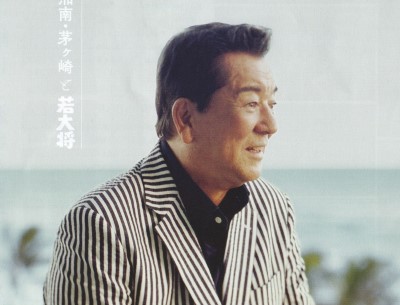
Kayama had lived in Chigasaki until he married at 33. His stage name was recommended by a fortune teller Kayama’s grandmother was well acquainted with. Kayama also consulted him about the naming of himself as a composer and his boat, and selected Kosaku Dan, and Koshin-maru, respectively.
Kayama’s nickname “A young leader” came from the 若大将 (a young leader) movie series. Nineteen films were made between 1961 and 1981. Before the series, two movies - 太陽の季節 (Season of Violence), and 狂った果実 (Crazy fruits) starring Yujiro Ishihara - were released in 1956, creating a sensation among movie fans. These two movies had a decadent mood, describing the unprincipled lives of wild youths in Zushi and Hayama.
In contrast, the 若大将 series were stories of university students enjoying their youth to the fullest. Kayama and Kunie Tanaka (1932-2021)*, who played his rival, appeared in all 19 films. Kayama said later that he was most influenced by actor Toshiro Mifune and movie director Akira Kurosawa.
*Kunie Tanaka played a father of two children in the hit TV drama series “From the Northern Country (1981-2002)” and became a national actor.
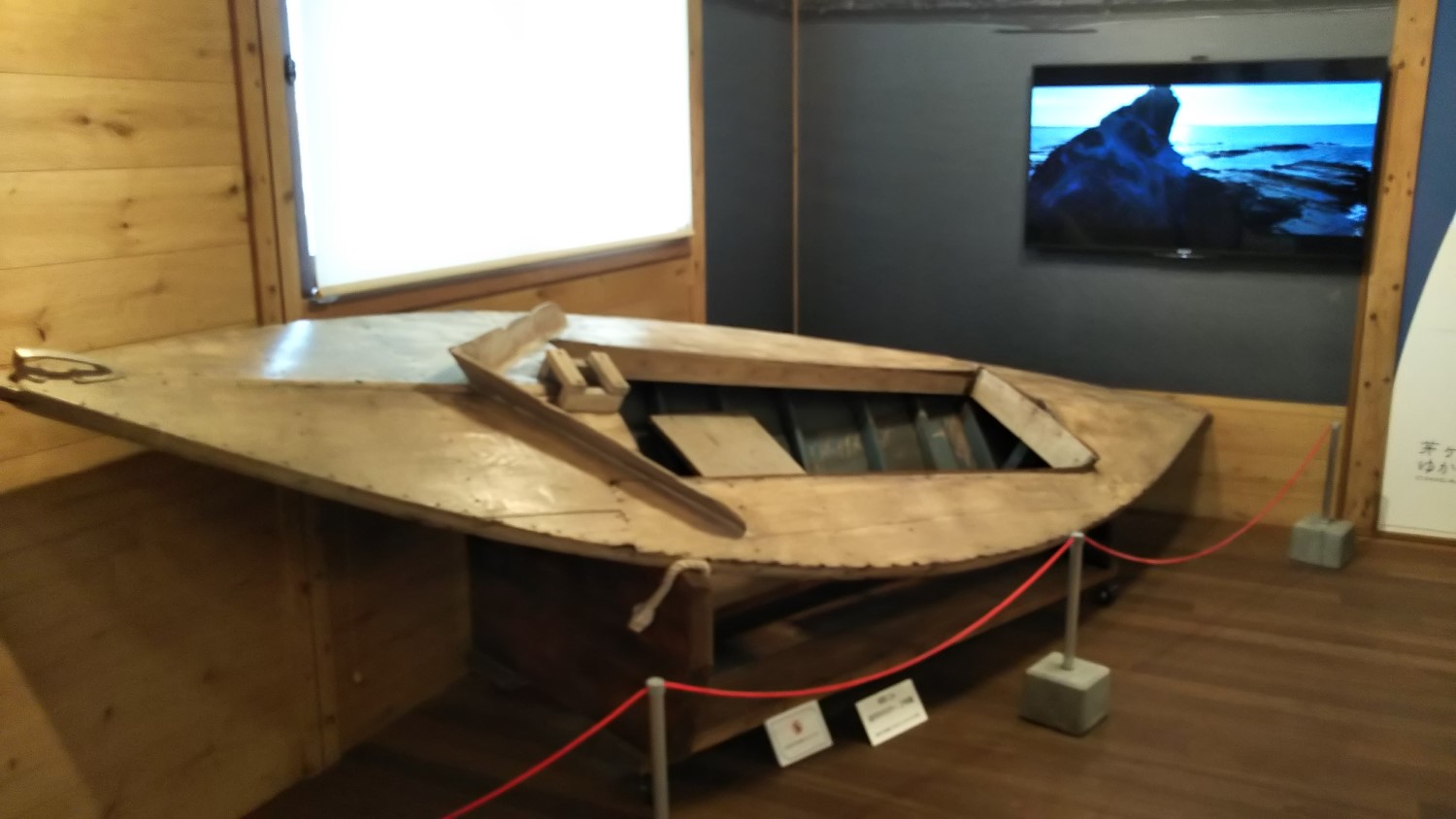
Many musicians followed Kayama from Chigasaki: Kunihiko Kase of the Wild Ones, the Iwasawa brothers of Bread and Butter, and Keisuke Kuwata of Southern All Stars.
These exhibits show Kayama makes an effort to keep up with society and strives to make people around him and himself happy.
Events in September
The 9th art exhibition by Chigasaki Bihou Club
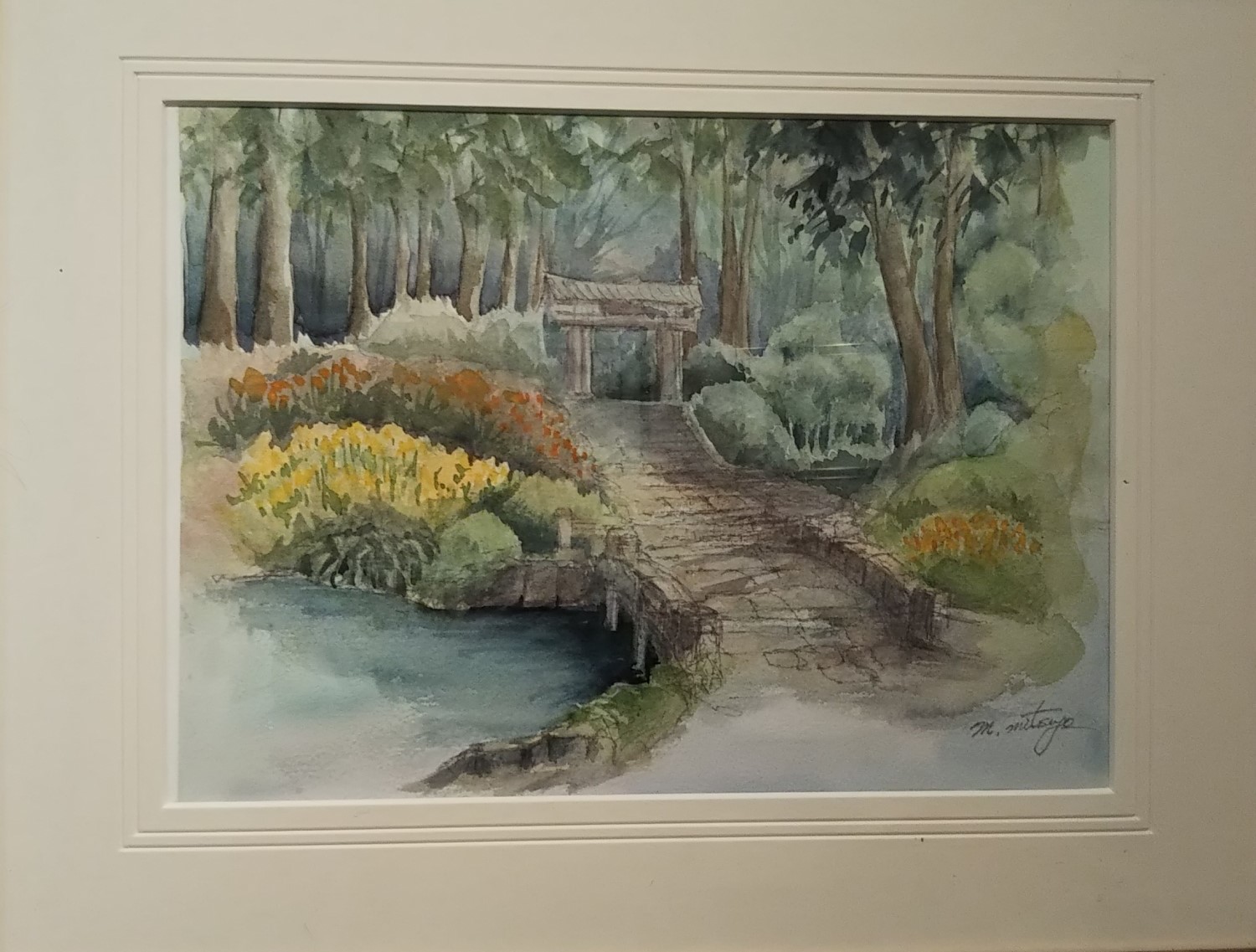
Chigasaki Bihou Club held its ninth exhibition at Citizen Gallery from September 6 (Wed) to the 10th (Sun). Art instructor Mitsuyo Matsui and 14 club members exhibited 69 works in total, five paintings on average per member. They used transparent watercolors, which contain smaller amounts of pigments than ordinary watercolors. Naturally, every painting was clear and had no garish colors. The pale tone provided paintings with a soft and peaceful atmosphere, which made visitors feel relaxed. Members usually draw landscapes in Shonan, but there were scenes in Hokkaido, Kyoto, Kanazawa, Shikoku, and other areas.

The club has lessons once a month, and exhibits their works annually in Chigasaki and at a joint exhibition in Yokohama, which Matsuo’s four classes in Tokyo, Yokohama, Odawara and Chigasaki participate in.
Ten years have passed since the Chigasaki class was founded.
Horseback Archery at Samukawa Shrine
Horseback archery, an 800-year-old Shinto ritual praying for a bumper crop and world peace, took place on September 19 (Tue), the day before the annual autumn festival of the shrine. Archers shot three arrows at three targets placed along the 220-meter stretch. All archers tried once to dedicate their arrows to the deity, and then, they tried again to compete with each other, and those achieving high accuracy rates did the third trial to determine the winner of this year. As usual, the ritual was performed by the Japan Equestrian Archery Association based in Kamakura. A crowd of spectators gathered along the course, but the number of them was a little smaller than usual probably due to the extreme heat this summer.
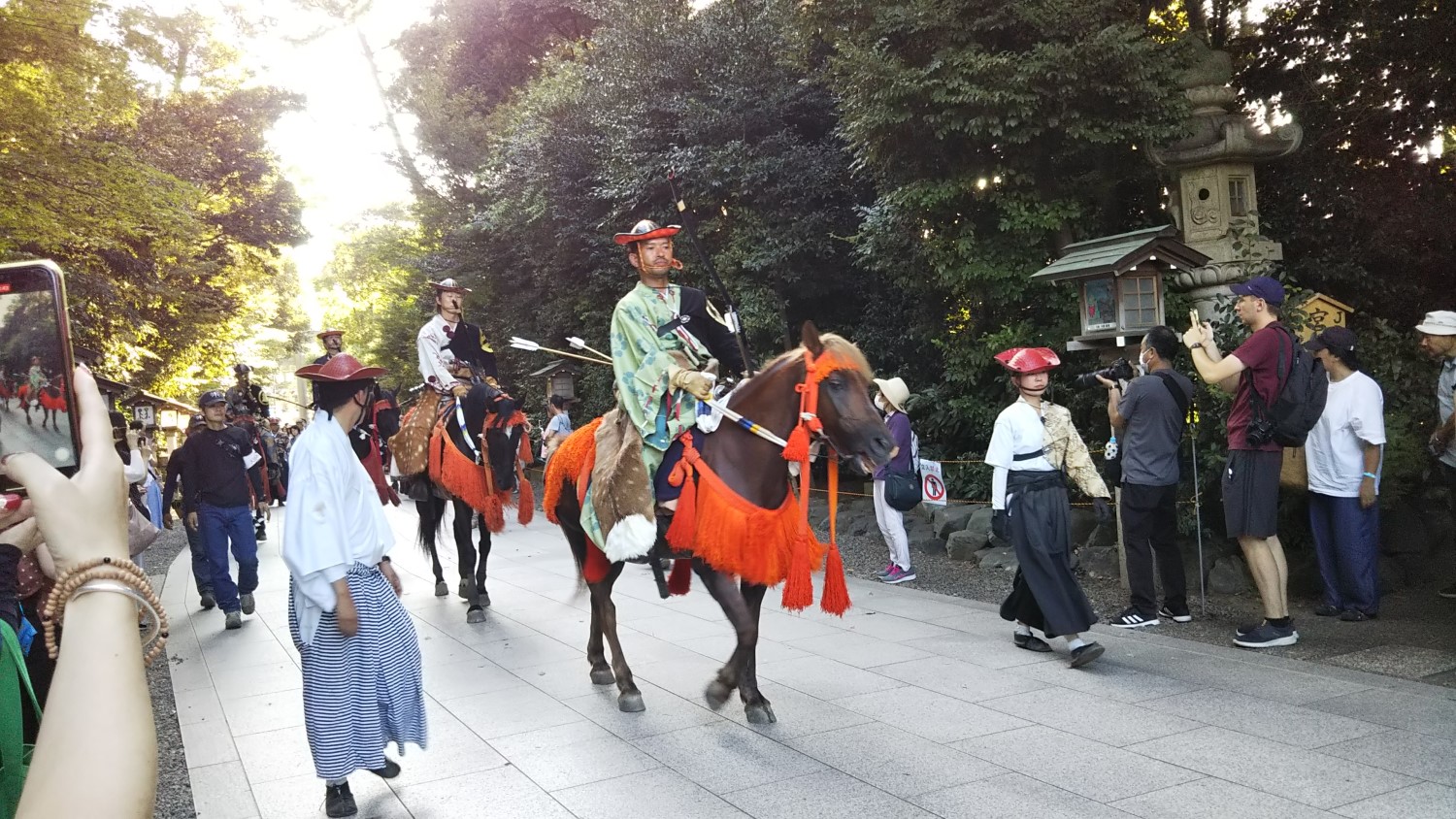
Koide River Higanbana Festival
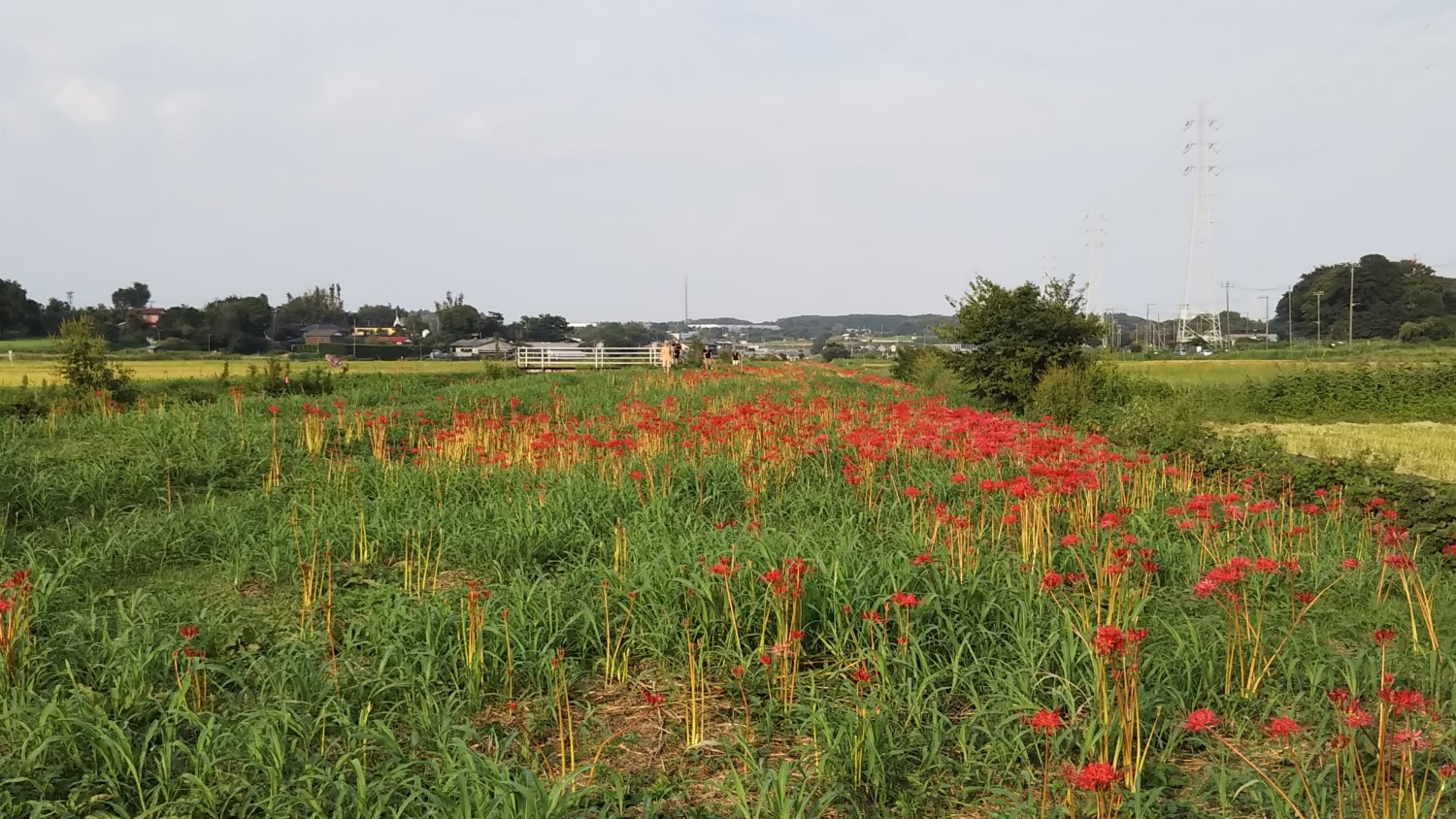
Most spider lilies have come into flower over a three-kilometer stretch along the Koide River. The two photos above and below were taken on September 20 (Wed). Red carpets were more brilliant this year than last year, probably because of continuing high temperatures this year. White spider lilies, which seem to be common in Kyushu, but rare in Kanto, were also observed. The variety is a hybrid of the red and yellow spider lilies, although no yellow variety was observed nearby.
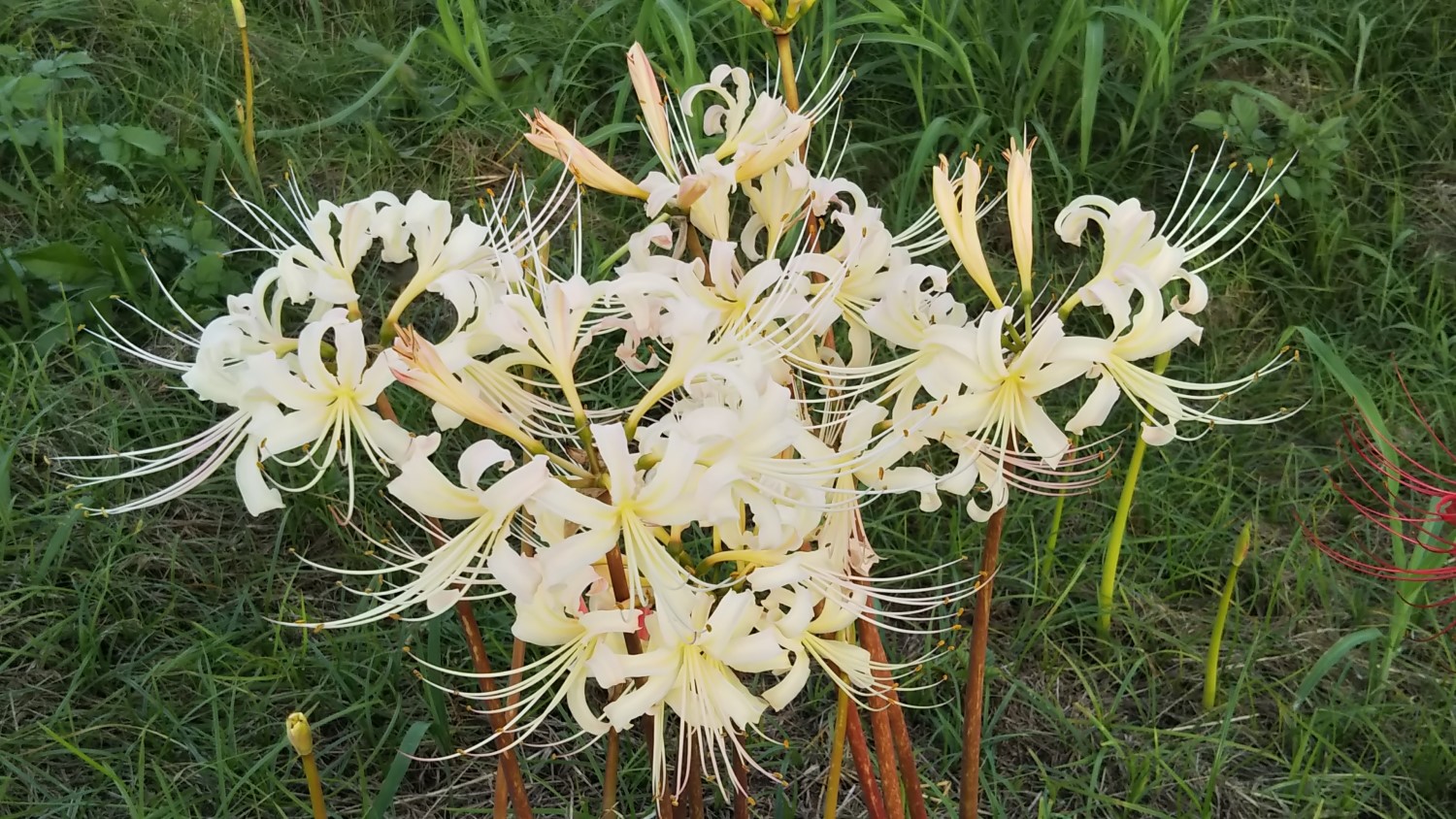
On September 23 (Sat), the Higanbana Festival was held at three spots along the river. Food trucks, vegetable shops, and stalls operated by local people created a festive mood at Endo and Uchimodori in Fujisawa, and Ozo in Samukawa. The flower season is expected to continue until early October.
When the western sky is clear, hikers on the river banks are able to view Fuji, Tanzawa and Hakone mountains. Satoyama park is near and worth visiting. The northern area has its own attractive sites which not many people know.
Events in October
Exhibitions at Citizen gallery
●Photo exhibition by the Chigasaki Chamber of Commerce and Industry: Sept. 27 (Wed) to the 30th (Sat) 10:00 ~ 18:00, Oct. 1 (Sun) 10:00 ~ 16:00
●The 97th Japan Watercolor Shonan branch Exhibition: Oct. 3 (Tue) 13:00 ~ 17:00, the 4th (Thu) to the 7th (Sat) 10:00 ~ 17:00, the 8th (Sun) 10:00 ~ 16:00
●Kirega (pictures made with fabric scraps) exhibition by 木綿の会 (Cotton club): Oct. 11 (Wed) 13:00 ~ 17:00, the 12th (Thu) to the 15th (Sun) 10:00 ~ 17:00
●Handicrafts exhibition by Patchwork class “Cotton Time”: Oct. 18 (Wed) to the 20th (Fri) 10:00 ~ 17:00, the 21st (Sat) 10:00 ~ 16:00
●Picture exhibition by Color pencil club: Oct. 26 (Thu) to the 28th (Sat) 10:00 ~ 17:00, the 29th (Sun) 10:00 ~ 15:00
●The 39th Indian-ink drawing exhibition by Shonan Indian-ink drawing club: Oct. 31 (Tue) 13:00 ~ 17:00, Nov. 1 to the 3rd (Fri): 10:00 ~ 17:00, the 4th (Sat) 10:00 ~ 16:00
Chigasaki Jamboree 2023
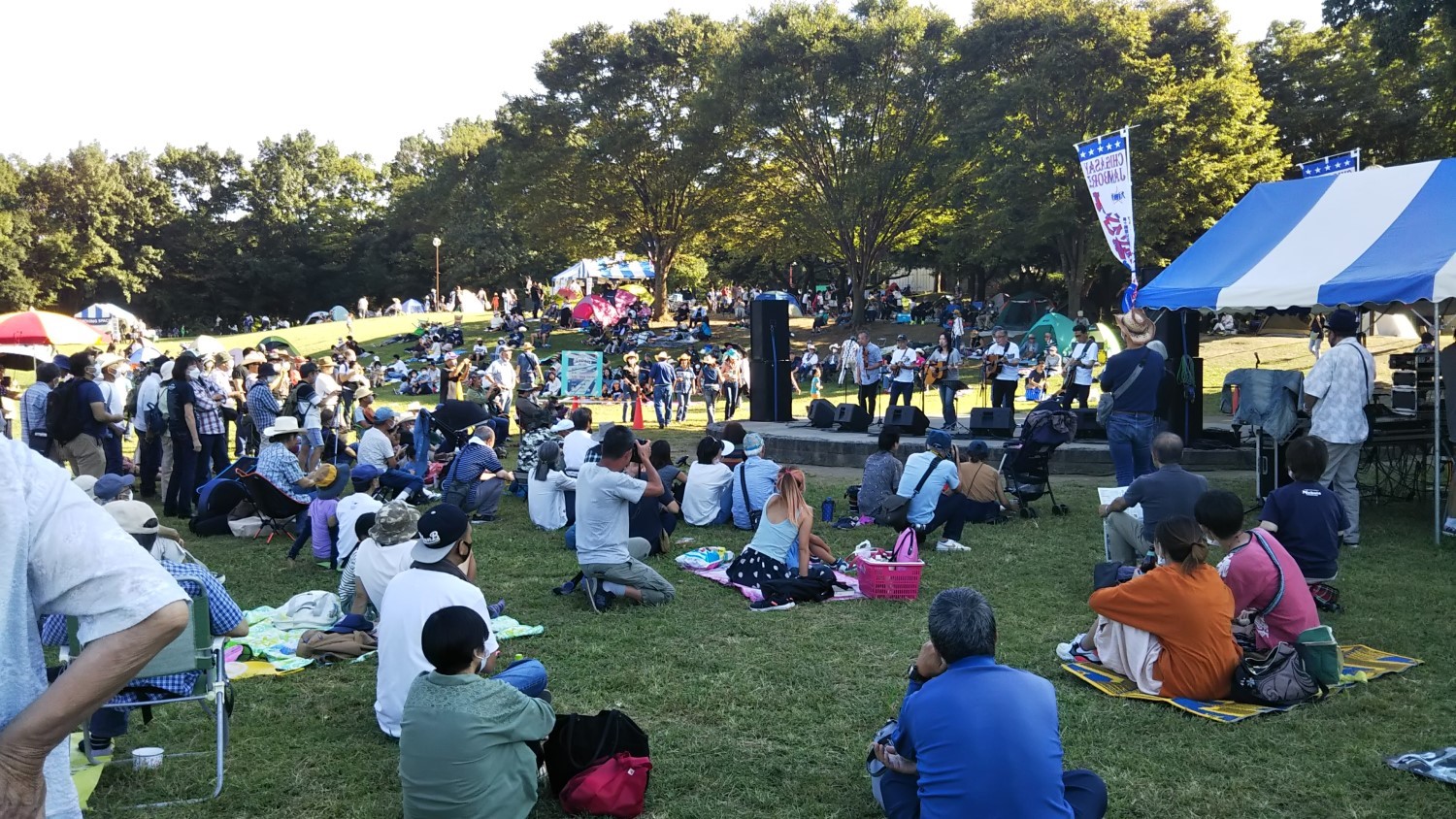
Chigasaki Jamboree 2023 will take place at Satoyama koen on October 8 (Sunday) 10:00 ~ 16:00. You will be able to enjoy country music and dance performances. More than ten country music bands will participate. The multi-purpose square of Satoyama koen will be crowded with performers, audience, and food trucks. The festival will welcome the arrival of autumn.
Chigasaki Citizen Cultural Festival 2023
The 63rd Citizen cultural festival will take place at the Civic Hall from Oct. 21 (Sat) to Nov. 19 (Sun). Events in October are in the table below.
Performances on stage (Civic Hall)
●Biwa Concert – Oct 21 (Sat) 13:30 ~ 16:30 (Mini Hall)
●Drama performance – Oct 22 (Sun) 14:00 ~ 16:30 (Small Hall)
●Autumn Concert - Oct 28 (Sat) 13:30 ~ (Small Hall)
●
Chorus Festival - Oct 29 (Sun) 11:45 ~ 16:30 (Large Hall)
●Classical Concert – Oct 29 (Sun) 13:00 ~ 18:00 (Small Hall)
Exhibitions (Civic Hall)
●Bonsai – Oct 27 (Fri) to the 29th (Sun) 9:00 ~ 17:00 (Room B, C)
Literary art (Civic Hall)
●Haiku Festival - Oct 22 (Sun) 10:00 ~ 16:00 (Large conference room)
●Photo exhibition – Oct 27 (Fri) 13:00 ~ 16:00, the 28th (Sat) 9:30 ~ 16:00, the 29th (Sun) 9:30 ~ 15:00 (Room A)
●Tanka Festival - Oct 29 (Sun) 13:00 ~ 16:30 (No.1 conference room)